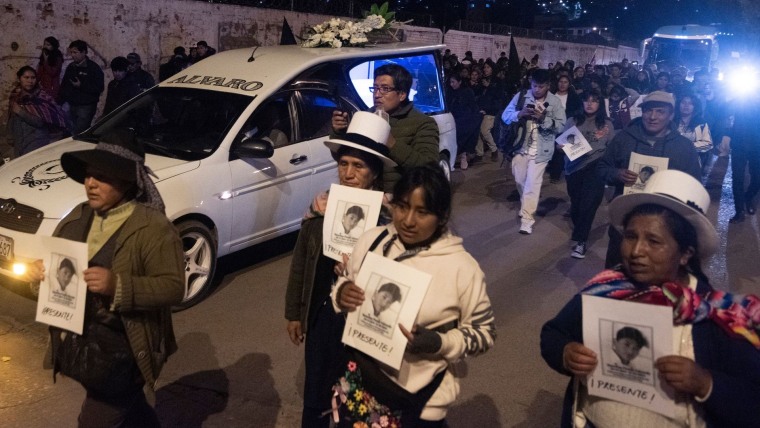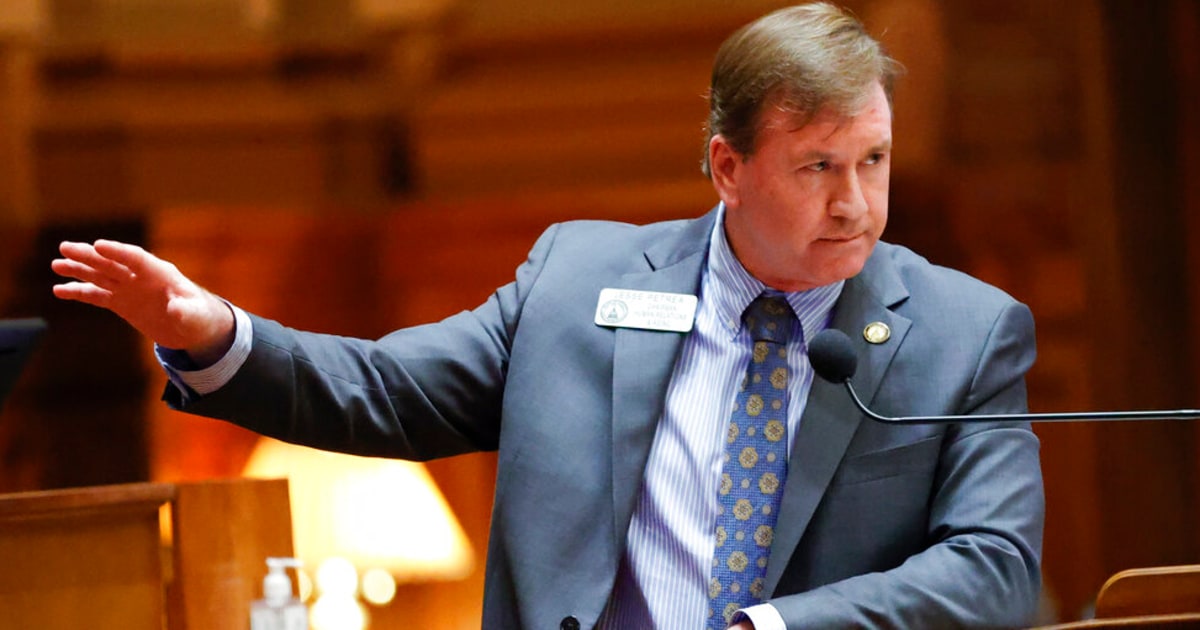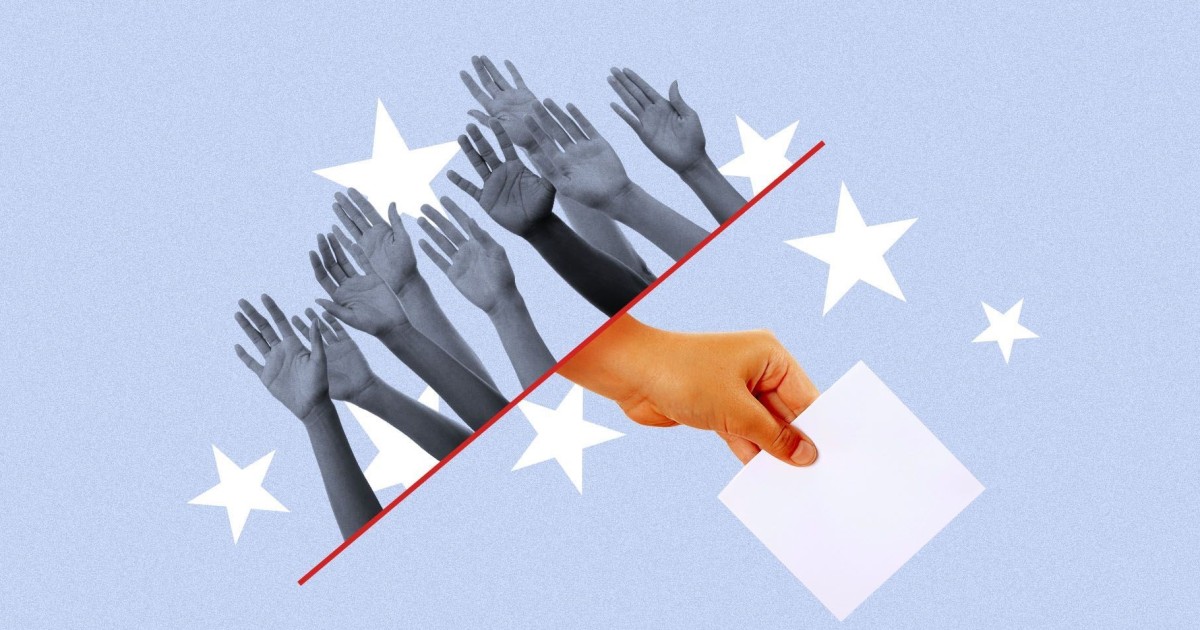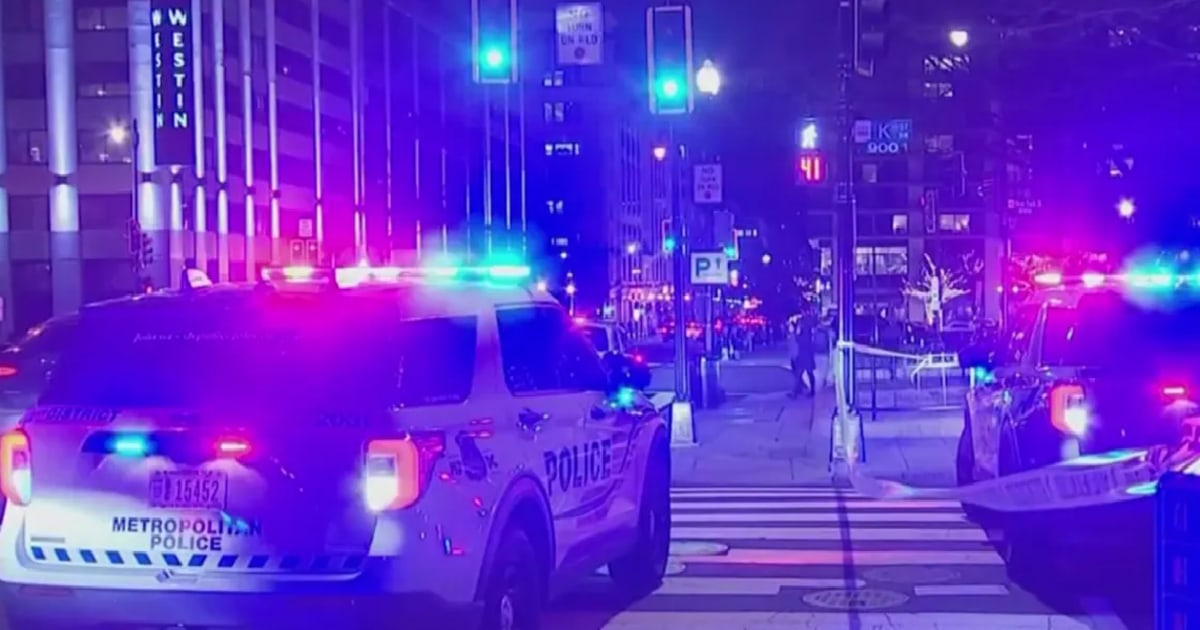📢 Axios Latino is the newsletter that summarizes every Tuesday and Thursday the key news for Latino communities in the hemisphere. You can subscribe by clicking here.
1. The Theme to Feature: Deaths at the Hands of Police
The rate of Hispanics killed by police officers in the United States increased by nearly 45% in the last decade, according to newly published data reviewed by Axios Latino.
Overview: It's been three years since George Floyd was killed by Minneapolis officers, in a case that sparked mass protests against police brutality and racial/ethnic demands for justice in the United States and elsewhere.
- However, there remains little data on how police violence affects Latino communities.
In figures: In 2020, there was a rate of 0.26 Latinos killed by public agents per 100,000 inhabitants. That's up from 0.18 per 100,000 in 2011, according to a study published this month in the Journal of Community Health.
- In New Mexico, the state with the highest proportion of Hispanic residents, the rate reached 1.02 per 100,000 people, the highest in the U.S.
- The researchers examined mortality data from the Centers for Disease Control and Prevention to estimate rates and see trends over that decade.
[Harsher punishment for being Latino: Study says they're more likely to get prison sentences]
Up close: Researchers also found that nearly 20% of these deaths between 2011 and 2020 were Hispanics. The fatal interaction rate of Latinos was 1.33 times higher than that of non-Hispanic whites over the same period.
- The largest increases were for Latino men ages 20 to 39 and for Hispanics living in the West.
The background: The CDC data used in the research has limitations, according to the study, as many police departments and other agencies do not keep standardized records about the race or ethnicity of the people they interact with. Academics note that the numbers of Latinos affected may be even higher.
- Jagdish Khubchandani, a professor of public health at New Mexico State University and a co-author of the study, said the researchers used shooting trends, both from the population and police, to analyze rates.
- Similar analyses, such as one by The Washington Post using data between 2015 and May 2023, have found that black people are killed by police at a rate more than double that of non-Hispanic whites. And that of Latinos is 55% higher than that of non-Hispanic whites.
In his own words: "Sometimes people assume that police brutality is experienced exclusively by African-Americans, but that's not the case," Khubchandani told Axios Latino.
- The professor added that the lack of research on public health issues about Latinos and the fact that many in the U.S. think of a black-white dichotomy when talking about racial issues contributes to insufficient information about Hispanics' interactions with police.
Between the lines: It's been an open secret that police disproportionately kill Hispanics, but there used to be no data like the one in the study to prove it, said Max Markham, vice president of political and community engagement at the research group Center for Policing Equity.
- "In most cases it is the same law enforcement that registers or determines the racial identity of the people with whom they interact. And their record is not always accurate," he added.
2. Expectations before the testimony of Peruvian president
Human rights groups in Peru say they are optimistic that President Dina Boluarte's testimony in a case involving the deaths of dozens of anti-government protesters will help advance the investigation.
News momentum: Boluarte was summoned to testify last week in the case, originally opened in January of this year. He will testify before the Peruvian Prosecutor's Office on June 6.
The funeral procession of a student killed during protests in PeruIvan Flores/AFP via Getty Images
- The case responds to the at least 67 deaths of protesters, mostly of indigenous or poor origins, during the protests between December and February.
- The protests began after the departure of then-President Pedro Castillo, who was ousted after trying to dissolve Congress. The protesters demanded that Boluarte, who took power as vice president, bring forward the elections.
- Boluarte could face charges of homicide, grievous bodily harm and even genocide depending on the preliminary investigation.
In detail: An Amnesty International report published last week concludes that security forces deliberately used excessive force and that there are indications of extrajudicial executions of protesters. The report was made from autopsy reviews and interviews with witnesses.
- An analysis by the Inter-American Commission on Human Rights also concluded this month that there was excessive use of force.
- A lawyer for Boluarte's defense has dismissed the case, arguing that the deaths were due to the "legitimate defense" of state forces against protesters. Boluarte said at the time, without providing evidence, that most of the protesters were from alleged terrorist groups.
But, but, but: Other criminal investigations in Peru into possible abuses by law enforcement have led to nothing.
Peru's president withdraws her ambassador to Mexico and accuses AMLO of interference
Feb. 26, 202301:58
- No security official has been convicted for the roughly 200 deaths of protesters over the past two decades, said Will Freeman, a senior fellow on Latin American affairs at the Council on Foreign Relations.
- The current investigation pointing to Boluarte's state responsibility could well fall apart just like others before it. Freeman points out above all that the judicial independence of the Office of the Prosecutor has been questioned.
- In its report, Amnesty International also stressed that several key steps of the investigation – such as gathering testimony at the time of the deaths – were not prompt and that in some cases evidence custody standards have not been met.
In their own words: Still, groups like the National Human Rights Coordination coalition say the investigation is an opportunity for justice.
- Although the group already advanced to local media this week that they are studying possibly taking the case to international instances, such as the Inter-American Court of Human Rights, if the local investigation does not demarcate responsible.
3. A return to community colleges
Enrollment rose during this semester that ends for the first time in a decade, data from the National Student Clearinghouse Research Center research group show.
Big picture: Rising college costs, at a time of economic anxiety, appear to be leading more students to reconsider where they go for U.S. higher education degrees.
- So the increase in enrollment may be due to a greater interest in studying the vocational or technical programs offered by these colleges, looking for a clearer path to a job, said Doug Shapiro, the executive director of the National Student Clearinghouse.
- For example, among the two-year degrees that had the most enrollments this year are computer science and information technology support (which grew 9.7%); mechanical and repair technicians (8.2% older); culinary services and other personal services such as cosmetology (9.7%); and that of movements and transport, to work on issues such as air control (the increase was 11.8%).
[This scholarship program will benefit thousands of Latino students... and his parents]
- The increase was also driven by the entry of more young students into these schools (sometimes high school students take classes at community colleges to earn college credits, for example).
They will not block the ban on a Latina student wearing a stole with the Mexican flag
May 28, 202300:23
Up close: Overall, college and post-secondary enrollment has not yet recovered to pre-pandemic levels.
- Before the COVID-19 pandemic began, the rate of Hispanic students in community colleges had grown substantially, from 18.5% in 2011 to 28% in 2018, according to the National Student Clearinghouse.
4. Summary of key news in Latin America and the Caribbean
1. Salvadoran President Nayib Bukele said Sunday that he will reinforce his anti-gang strategy in the coming days, with measures so that these groups cannot regroup, he said.
- He did not provide details, but for the past year he has had the country under a state of emergency that allows authorities to arrest people en masse and jail them indefinitely.
Illustration: Natalie Peeples/Axios
2. The first summit of South American leaders in nearly a decade takes place Tuesday in Brasilia.
- Among the planned discussions were issues of environmental protection and indigenous communities, as well as collaboration to combat organized crime and drug trafficking.
5. A space of its own
Dominican communities in New York now have their own designated public space, Plaza Quisqueya.
We toured Plaza Quisqueya, the first dedicated to the Dominican community in New York
May 16, 202302:20
Details: The plaza was renamed Quisqueya, the Taino name for the island shared by Haiti and the Dominican Republic, in February by order of the New York government.
- And this month the plaza was chosen on the list of public spaces to which New York will collectively dedicate $30 million for renovations and improvements.
In her own words: The name change and planned funds are a recognition of Dominicans' deep roots in the city, Susana Osorio, a local restaurateur who is also director of the plaza, told Noticias Telemundo.
- "Now it looks very pretty. On Sundays it gets crowded, they put orchestras; very organized, very nice," Juan Ovalle told the network.
Thanks for reading! We returned on Thursday.
If you want to share your experiences or send us suggestions and comments, send an email to axioslatino@axios.com.
Do you want to read any of the previous editions?
Uvalde police a year later: some see improvements, others feel there was no accountability
What are Biden's plans to win back Latino voters?
How Latin American leaders bet on lithium, the so-called 'white gold'









